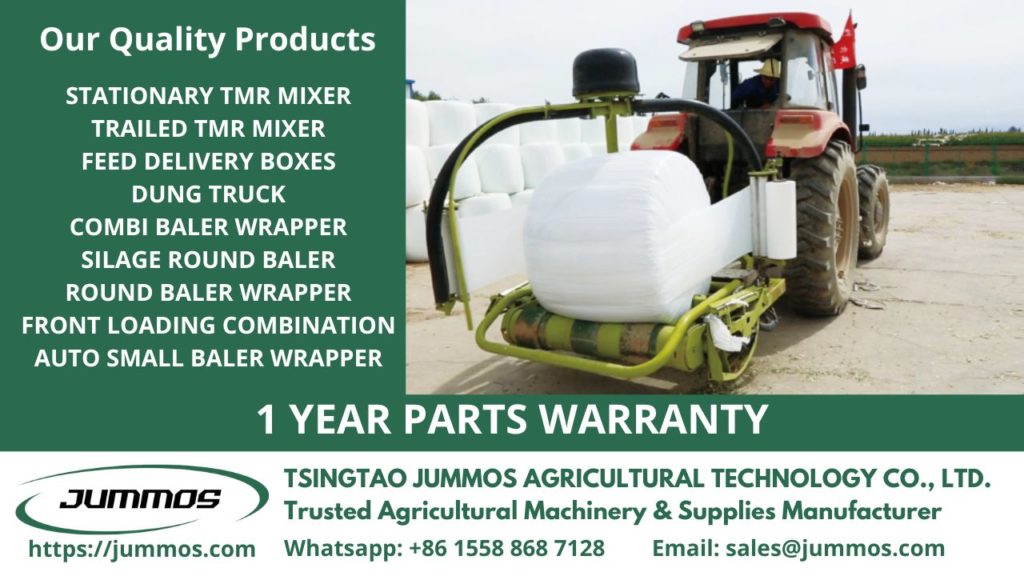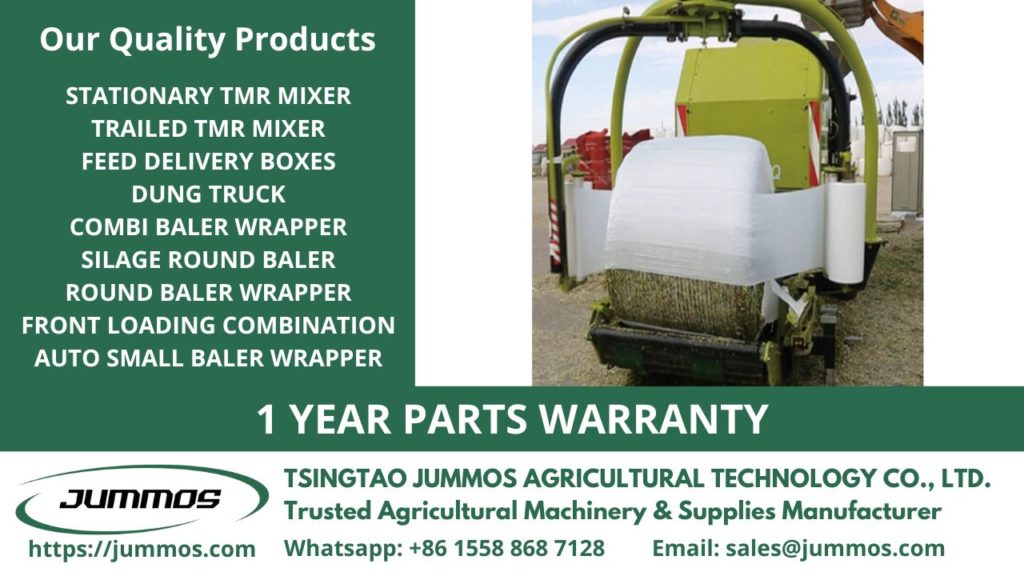What comes to mind when you hear about an inexpensive bale wrapper? It’s often a source of confusion, as people sometimes mistake silage film for the bale wrapper machine. When it comes to silage film, is it a lower-quality option that tears easily during wrapping? Is it a film that cannot effectively protect hay or forage for months from elements like snow, heavy rain, and summer sunburn? Or perhaps this silage film doesn’t match the typical length and width of a standard bale wrapper.
However, when we’re talking about a baling and wrapping machine, durability becomes a key consideration. What crosses your mind varies, as the interpretation of an inexpensive bale wrapper can differ depending on the manufacturer or company offering the product.
Contents
Effectiveness of Inexpensive Bale Wrapper?
The effectiveness of choosing inexpensive bale wrapping film or silage film depends on several factors, including the condition of the hay bales you have collected, the material quality from the factory that produces it, and how you plan to store the hay bales (whether in an open space or a closed room). When you find yourself in a dilemma about whether it’s necessary to purchase inexpensive bale wrapping film, take a moment to assess your specific needs for this bale wrapping solution. Do you have a sufficient budget to wrap tens or even hundreds of hay bales for your animal husbandry?
One important point to keep in mind is that an inexpensive bale wrapper machine can be a valuable asset in streamlining your hay wrapping process and ensuring its quality.
Importance of Bale Wrapper
A bale wrapper machine is vital in the agricultural and livestock industries for several reasons. Firstly, it plays a crucial role in preserving the quality of hay and forage by encasing it in a protective plastic film, shielding it from moisture, air, and contaminants. This preservation is essential to maintain the nutritional value of the feed. Secondly, these machines extend the storage period of bales, allowing farmers to store forage for an extended period, particularly in regions with harsh weather conditions. By reducing nutrient loss and ensuring the feed retains its nutritional value, bale wrapper machines benefit livestock farmers who rely on high-quality feed for their animals’ health and productivity. Moreover, they offer efficiency and labor savings compared to manual wrapping, enabling quick and consistent wrapping, saving both time and labor costs.
Additionally, wrapped bales are easier to handle and transport, reducing the risk of damage during these processes. Furthermore, bale wrappers provide protection against unpredictable weather, such as sudden rain or snowfall, ensuring that forage remains dry and suitable for livestock feeding. Overall, bale wrapper machines enhance efficiency, reduce labor, and contribute to the overall success of agricultural and livestock operations.
What A Bale Wrapper Can Give You?
You could have a round bale wrapper tractor that can wrap 40 to 50 bales per hour for a very affordable price. Find this a bale wrapper with a bale weight size of 500 to 700 kilograms through an online search. Then, you have to check the required power of it which reaches more than 90 horsepower with a bale size 1.000 mm x 1.000 mm. Round bale wrapper like this is in the inexpensive bale wrapper category that you can rely on to make it easier for you to work on bale wrapping in the field. Slow-motion as long as the blades help to make the bales tight, dense, and less prone to damage. You should also use LLDPE plastic material to prevent forage or hay from losing nutrients during the propeller and storage process.
What About The High Humidity Levels In The Forage?
In this modern era of agriculture, a bale wrapper has been created to bind wet feed into solid packages without losing much of the nutrients in it. The silage baler is even modified in the scraper section of the belt and roller to prevent material build-up, and with the heavy-duty bearings, it can help handle the increased weight of the bales. The older ballers could also add a silage kit to allow the producer to handle the baler on his customer’s farm.
It Is Highly Recommended To Use Plastic Wrap Instead Of Twine Wrap
Plastic is identical with something inexpensive, affordable, and massive to use. For the bale wrapper, you need to buy plastic wrap which is more resistant to weather, easy to apply, easy to obtain, and easy to remove when needed. Twine wraps are often difficult to remove from hay bales and cannot protect against heat and rain or heavy snow.
The plastic wrap used in bales is made of polyethylene plastic film, which can withstand local environmental conditions, UV radiation, and changes in ambient air temperature. Using a high-quality silage film will result in high tack, a high tensile rate, and good sealing performance for the bale. Therefore, it is advisable to choose a white film when making your purchase to reflect sunlight and reduce plastic radiation heating. Additionally, Jummos offers a silage film without a logo upon your request, allowing you to apply your own logo. If you are interested in learning more about our silage film and round bale wrapper for sale, please don’t hesitate to contact us.
The Process Uses Inexpensive Bale Wrapper
Market demand continues to increase, making many companies develop their technology to create inexpensive bale wrappers. There are many types of bale wrappers with manual, semi-automatic controls or fully computer technology. Bale wrapper models also vary, you will find mounted or trailed models with all sizes of round bales. The end result can be square or round depending on the machine used.
To make bales, the process is the same as making traditional hay. You will only need additional equipment such as plastic and wrapper. Meanwhile, the equipment for the bale preparation process is not much different from conventional hay making. Equipment for making bales is also becoming more sophisticated, for example balers now have the ability to chop so that the resulting bales are denser.
The smaller size of the chopping also makes it easier to mix with rations. To use a bale wrapper, you can buy it yourself or partner with a local bale wrapper operator or rent one. So that the bale results are good and the nutrition is maintained, the process of wrapping the bales should pay attention to the following points.
- Regulating the speed of movement of the wrapper, slow movement during the process helps reduce damage to the resulting bale. This is also a way to produce dense, tight bales
- You can use netting to prevent forage stems from damaging the plastic
- Pay attention to the use of plastic to avoid damage to the coating which can actually cause losses in the storage process.
The amount of plastic used depends on the storage duration you expect. Four layers of plastic are sufficient for storing bales in the short term. However, six plastics provide enough space to remove oxygen and protect against various punctures. You have to pay attention to the amount of plastic. Too little plastic causes oxygen to penetrate the bale. This oxygen will stimulate the growth of mold and speed up rot. Of course, this will be detrimental to breeders. As the wrapping process occurs, you must ensure the film remains stretched evenly over the bales.
The number of bales wrapped depends on the type of inexpensive bale wrapper used. An operator can wrap at least 25 bales every hour using a single bale wrapper. With in-line wrapping, the number doubles per hour. The price also varies based on the plastic roll used.
So, the overall cost depends on the type of wrapping, the amount of labor and the amount of plastic. Each type of wrapping certainly has its own advantages and disadvantages. For example, in-line wrapping, this type of wrapper does not require a lot of labor and plastic to wrap, but the price may also be higher.


